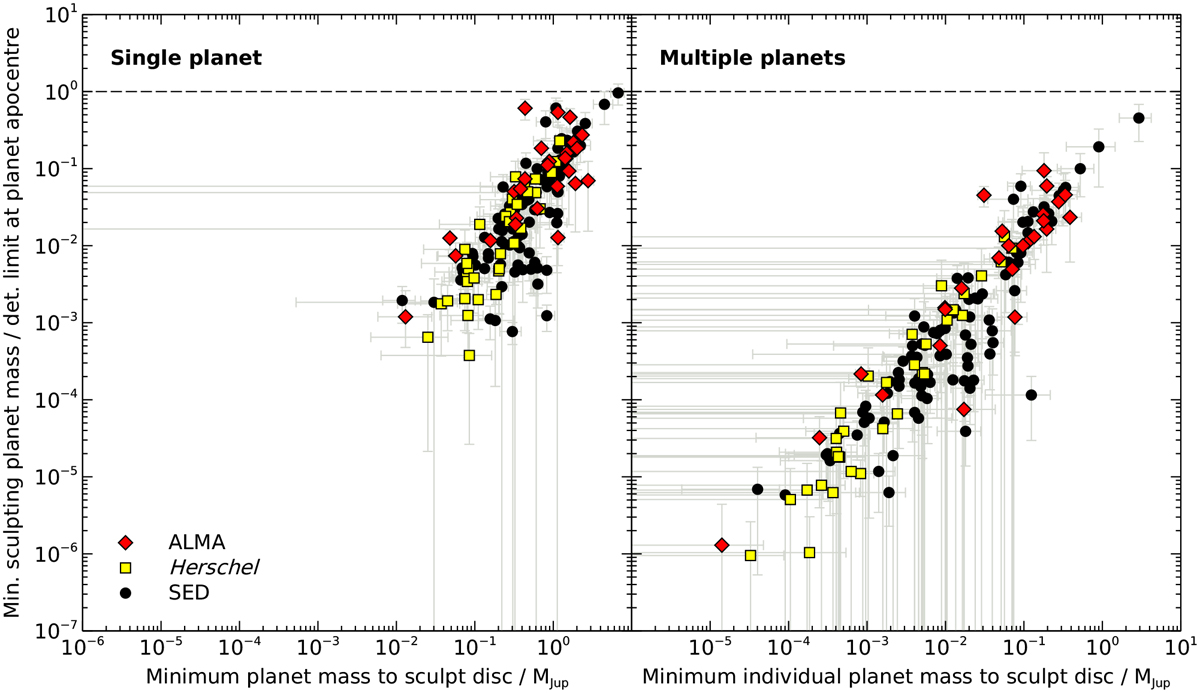Fig. 10

Download original image
Detectability of the predicted disc-sculpting planets (Sect. 3). Horizontal axes show the minimum planet masses required to sculpt the discs if debris clearing is performed by one planet (left plot) or by multiple, equal-mass planets (right plot). The vertical axis shows sculpting planet masses divided by our L′-band detection limits at the apocentres of those planets (assuming the best-case scenario, where the systems are face-on to the observer). The dashed lines show unity. Symbols have the same meanings as in previous figures. If the discs are each sculpted by one planet (left plot), then some of these planets will lie at or close to the current detection limits, and a factor of 10 improvement in mass detection limits could yield many more predicted planets. Conversely, if instead each disc is sculpted by multiple planets (right plot), then these planets could be significantly smaller and many might not be observable even with significant improvements in detection limits.
Current usage metrics show cumulative count of Article Views (full-text article views including HTML views, PDF and ePub downloads, according to the available data) and Abstracts Views on Vision4Press platform.
Data correspond to usage on the plateform after 2015. The current usage metrics is available 48-96 hours after online publication and is updated daily on week days.
Initial download of the metrics may take a while.


